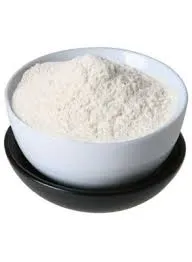
Nov . 04, 2024 14:09 Back to list
Understanding the Basics and Applications of HPMC in Various Industries
What is HPMC?
Hydroxypropyl Methylcellulose (HPMC) is a plant-derived polymer widely used in various industries due to its unique properties. Often regarded as a cellulose derivative, HPMC is synthesized by the modification of natural cellulose, which is a primary component of plant cell walls. The process of creating HPMC involves the substitution of hydroxyl groups in cellulose molecules with hydroxypropyl and methoxy groups. This alteration imparts solubility and versatility to HPMC, making it an indispensable ingredient in many formulations.
Chemical Structure and Properties
The chemical structure of HPMC consists of a linear chain of glucose units. The degree of substitution—the ratio of hydroxypropyl to methyl groups—determines the solubility and viscosity characteristics of HPMC. For instance, higher substitution levels often lead to increased water retention and gel-forming capabilities. This unique combination of hydrophilicity and hydrophobicity enables HPMC to function under diverse conditions, making it suitable for both aqueous and non-aqueous environments.
One of the hallmark features of HPMC is its ability to swell in water but not dissolve completely. This property allows it to form gels and emulsions, giving manufacturers latitude in product formulation. HPMC is also thermostable, which means its properties remain consistent across various temperature ranges. This stability and inert nature further increase its appeal for use in both food and pharmaceutical applications.
Applications of HPMC
HPMC has numerous applications across different sectors, including pharmaceuticals, food production, construction, and cosmetics.
1. Pharmaceuticals In the pharmaceutical industry, HPMC serves vital roles as a binder, coating agent, and controlled-release agent in drug formulations. Its excellent film-forming properties allow it to create a protective layer over tablets, enhancing their stability and bioavailability. HPMC is also utilized in ophthalmic preparations, where it acts as a lubricant to alleviate dry eye symptoms.
what is hpmc

2. Food Industry In food production, HPMC is often employed as a thickening agent, emulsifier, and stabilizer. It enhances the texture and mouthfeel of various food products, including sauces, dressings, and dairy products. Its ability to retain moisture makes it a popular ingredient in gluten-free baking, where it mimics the elasticity and binding characteristics typically provided by gluten.
3. Construction HPMC is used in the construction industry primarily as an additive in wall plasters, tile adhesives, and mortar. It improves the workability and adhesion of these mixtures, aiding in smooth application and reducing water loss during drying. Its presence enhances the overall durability and performance of construction materials.
4. Cosmetics In cosmetics and personal care products, HPMC is often included for its thickening and stabilizing properties. It serves as a base in lotions, creams, and gels, ensuring consistent texture and improved spreadability. Additionally, HPMC can enhance the viscosity of cleaning products, making it easier to apply.
Safety and Regulatory Approval
HPMC is recognized as safe for consumption and use in various applications. Organizations such as the U.S. Food and Drug Administration (FDA) and the European Food Safety Authority (EFSA) have approved HPMC for use in food and pharmaceutical products, classifying it as a Generally Recognized As Safe (GRAS) substance. It is non-toxic and non-allergenic, making it suitable for a wide range of consumers.
Conclusion
In summary, Hydroxypropyl Methylcellulose (HPMC) is a versatile and valuable material across numerous industries. Its unique properties, including water retention, viscosity modulation, and thermodynamic stability, enable its application in pharmaceuticals, food production, construction, and cosmetics. As research continues to unfold, the potential for HPMC seems boundless, indicating its importance in modern formulations and innovations. As consumers increasingly seek products that emphasize functional ingredients, the role of HPMC is likely to expand, solidifying its place as a cornerstone in various industrial applications.
-
Versatile Hpmc Uses in Different Industries
NewsJun.19,2025
-
Redispersible Powder's Role in Enhancing Durability of Construction Products
NewsJun.19,2025
-
Hydroxyethyl Cellulose Applications Driving Green Industrial Processes
NewsJun.19,2025
-
Exploring Different Redispersible Polymer Powder
NewsJun.19,2025
-
Choosing the Right Mortar Bonding Agent
NewsJun.19,2025
-
Applications and Significance of China Hpmc in Modern Industries
NewsJun.19,2025







